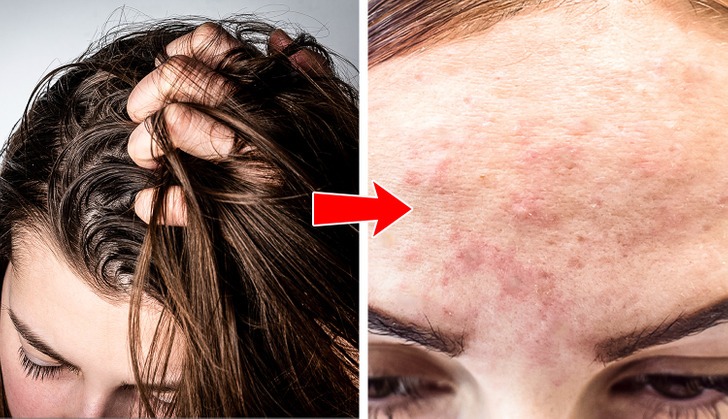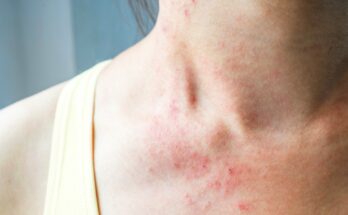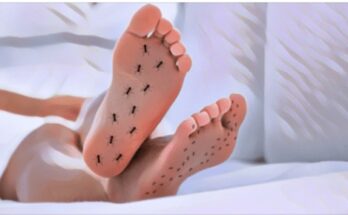
SB.. What the Acne on 5 Body Parts Is Trying to Tell You About Your Lifestyle Habits
Acne is a common skin condition that affects people of all ages, but its presence on different parts of the body can be more than just a cosmetic issue. Often, acne can serve as an early indicator of underlying health concerns or lifestyle habits that need to be addressed. While acne may be caused by genetic factors, hormonal imbalances, or dietary influences, changes in your skin may also suggest other health problems that could benefit from medical attention.
In this article, we explore how acne on eight different parts of your body might be trying to communicate important messages about your overall health. Based on verified medical sources and expert advice, we will dive into the causes of body-specific acne and the best ways to manage it.
1. Acne Around the Mouth: Irritation or Hormonal Changes?
Acne around the mouth is often the result of external irritants. Common culprits include cell phones, helmet straps, or musical instruments, all of which may transfer bacteria or oils to your skin. Additionally, hormonal fluctuations, cosmetics, and facial products can also contribute to the development of acne in this area.
To manage mouth-area acne, experts from the American Academy of Dermatology (AAD) recommend using non-comedogenic (pore-blocking) products, maintaining a clean skincare routine, and avoiding unnecessary skin contact with objects like phones. If acne persists, consulting a dermatologist is essential to rule out any underlying hormonal or dermatological concerns.
Source: American Academy of Dermatology – Acne Treatment

2. Acne on the Nose: Pore Blockages and Oiliness
Nose acne is one of the most common types of facial acne due to larger pores in this area, making it easier for dirt, oil, and bacteria to accumulate and clog the pores. The nose is also oilier than other areas of the face, which makes it more susceptible to acne breakouts.
Factors like stress, dietary habits, and certain medications may exacerbate this condition. If nose acne becomes persistent, treatments containing Tea Tree Oil, sodium sulfacetamide, and sulfur can help prevent bacteria buildup and reduce inflammation. However, for severe cases, visiting a dermatologist is advisable.
Source: Mayo Clinic – Acne Treatment
3. Acne on the Forehead: Hair Oil and Product Build-Up
The forehead is another area prone to acne due to the increased production of oil. In some cases, hair care products, such as pomades, gels, or waxes, which often contain coconut oil or cocoa butter, can contribute to forehead acne. The oils from your hair can transfer to your forehead, clogging pores and leading to acne.
To prevent acne in this area, frequent hair washing and avoiding greasy hair products are essential. Experts from the American Academy of Dermatology also recommend using a gentle cleanser to manage oil production on the skin.
Source: American Academy of Dermatology – Forehead Acne
4. Jaw and Neck Acne: Hormonal Imbalances at Play
Acne on the jawline and neck is often a sign of hormonal fluctuations, especially during menstruation or pregnancy. Hormones like androgens can stimulate the sebaceous glands to produce more oil, leading to clogged pores and acne.
Certain medications, such as birth control pills, can also trigger acne in these areas. While jawline acne is often temporary, it’s essential to follow a skincare routine that includes non-comedogenic cleansers and oil-free moisturizers. If acne becomes persistent, medical advice may be needed.
Source: Cleveland Clinic – Hormonal Acne
5. Acne on the Cheeks: Bacteria and Lifestyle Habits
Cheek acne is common and can be triggered by contact with dirty objects, such as a cell phone or pillowcases, which may harbor bacteria. A major contributor to cheek acne is the frequent touching of the face, which transfers oils and dirt from hands to skin. Additionally, hormonal changes can play a significant role.
To reduce acne on the cheeks, regularly clean your phone, change pillowcases weekly, and avoid touching your face. Maintaining a regular hand-washing routine and using non-comedogenic skincare can also help prevent breakouts in this area.
Source: National Health Service (NHS) – Acne Management
6. Back Acne (Bacne): Sweat, Tight Clothes, and Skin Irritation
Back acne, or bacne, often occurs due to the combination of sweat, bacteria, and oil. This area is especially vulnerable during physical activity, as tight clothing or exercise equipment can trap sweat and oils against the skin, leading to clogged pores.
Tight fabrics, including athletic wear, can irritate the skin, leading to acne breakouts. To combat bacne, experts recommend showering promptly after exercise and wearing loose-fitting clothes that allow your skin to breathe. In some cases, topical treatments containing benzoyl peroxide or salicylic acid may help reduce acne.
Source: Cleveland Clinic – Back Acne Treatment
7. Leg Acne: Friction and Folliculitis
Acne on the legs may be a result of friction from tight athletic wear, such as compression gear or sports equipment. However, leg acne is often confused with conditions like folliculitis, eczema, or keratosis pilaris (KP), which can also lead to bumps and irritation on the skin.
If the acne on the legs is painful or itchy, it’s important to consult a healthcare provider to ensure proper diagnosis and treatment.
Source: American Academy of Dermatology – Folliculitis
8. Chest Acne: Sweating, Tight Clothing, and Irritating Products
Similar to back acne, chest acne can be triggered by tight clothing and friction, especially during physical activities. Harsh laundry detergents or body lotions containing pore-clogging ingredients can also contribute to breakouts in this area.
To prevent chest acne, dermatologists recommend using sensitive skin-friendly detergents and fragrance-free body lotions that are labeled as non-comedogenic. Also, make sure to wear breathable clothing to allow the skin to breathe and reduce sweating buildup.
Source: Mayo Clinic – Acne on the Chest
Conclusion: Managing Acne Through Lifestyle Changes
Acne on different parts of the body can reveal valuable insights into your overall health and lifestyle habits. While some types of acne may be related to genetics or hormonal imbalances, many can be prevented or minimized by adjusting habits such as diet, hygiene, and skin care routines.
By paying attention to the areas where acne occurs and making simple lifestyle changes—like washing your hands regularly, changing your pillowcases, and using non-comedogenic products—you can reduce the frequency and severity of breakouts.
If acne persists despite these changes or becomes more severe, it’s always advisable to consult with a dermatologist or healthcare provider for personalized treatment options.
Verified Sources:
- American Academy of Dermatology
- Mayo Clinic – Acne Treatment
- Cleveland Clinic – Acne Care
- National Health Service (NHS) – Skin Care
- American Academy of Dermatology – Folliculitis










